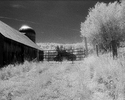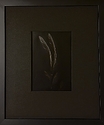Donald Qualls
Subscriber
My new-to-me Minox B arrived in the mail yesterday, along with four fresh cassettes of film and a UPS box containing the daylight loading developing tank. I went over the functions -- shutter speeds look good and even 1/2 second seems accurate enough. I found a video on how to open it for loading (which included how to set the ASA speed on the light meter -- which seems to read about 3 stops HIGH!?). I loaded one cassette of 100 speed "Spy Film" (slit down Delta 100, seemingly).
Unfortunately, the light at my desk and my old eyes combined to make me think the red line at 36 exposures was the red start mark on the counter, and advancing to 0 had me actually advancing to 40.
Now, based on the even-seeming frame spacing I've seen in photos of Minox film strips, I've presumed that there's a cam mechanism similar to (well, the prototype of) the ones I've seen in Minolta 16 II and Kiev 30 cameras -- and if there is, I wonder if I'm going to get overlapped frames, with the film advance compensating for 40 exposures of film that isn't on the take up spool -- and whether that will switch to extra-wide spacing once I run past the 50 on the counter and back to 0? I've only exposed three or four frames so far, so it wouldn't be impossible to put the camera in my changing bag, transfer the film back to its coffin box, and reset the counter to 4 or 5 before reloading the film -- but is it worth bothering? Film is thinner now than it was in the late 1950s when this camera (with the honeycomb meter cell cover) was made, yet film advance compensators seem to cope well enough...
And relative to the light meter -- the compensation for the ND filter appears to work, but the meter indicated 1/1000 with ASA 100 in Sunny 16 conditions (for this camera, I'd call it Sunny 1000) -- but it indicated that with the ND filter deployed; it read about three stops higher (1/8000?) without the filter. I'm used to 1950s vintage selenium meters reading low, i.e. overexposing -- is this adjustable in any way, or should I just put a couple strips of black tape over the corners of the meter aperture?
Unfortunately, the light at my desk and my old eyes combined to make me think the red line at 36 exposures was the red start mark on the counter, and advancing to 0 had me actually advancing to 40.
Now, based on the even-seeming frame spacing I've seen in photos of Minox film strips, I've presumed that there's a cam mechanism similar to (well, the prototype of) the ones I've seen in Minolta 16 II and Kiev 30 cameras -- and if there is, I wonder if I'm going to get overlapped frames, with the film advance compensating for 40 exposures of film that isn't on the take up spool -- and whether that will switch to extra-wide spacing once I run past the 50 on the counter and back to 0? I've only exposed three or four frames so far, so it wouldn't be impossible to put the camera in my changing bag, transfer the film back to its coffin box, and reset the counter to 4 or 5 before reloading the film -- but is it worth bothering? Film is thinner now than it was in the late 1950s when this camera (with the honeycomb meter cell cover) was made, yet film advance compensators seem to cope well enough...
And relative to the light meter -- the compensation for the ND filter appears to work, but the meter indicated 1/1000 with ASA 100 in Sunny 16 conditions (for this camera, I'd call it Sunny 1000) -- but it indicated that with the ND filter deployed; it read about three stops higher (1/8000?) without the filter. I'm used to 1950s vintage selenium meters reading low, i.e. overexposing -- is this adjustable in any way, or should I just put a couple strips of black tape over the corners of the meter aperture?





